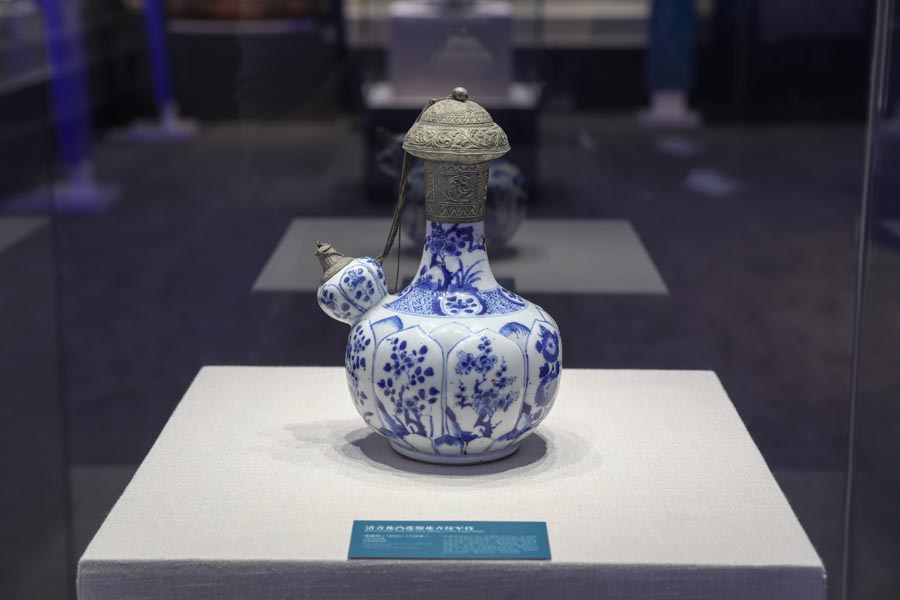Sunken ceramic treasures star in maritime exhibition
 0 Comment(s)
0 Comment(s) Print
Print E-mail China Daily, May 29, 2018
E-mail China Daily, May 29, 2018

A shipwreck is like a museum - a time capsule filled with stories of the people aboard, the voyage they were undertaking and the age in which they lived. An ongoing exhibition at the China Maritime Museum offers a glimpse into the stories of ill-fated voyages through the export of porcelain from 11 shipwrecks.
China and the World: Shipwrecks and Exported Porcelain on the Maritime Silk Road opened at the museum in Lingang New City, a satellite town in suburban Shanghai, on May 8. It'll run through Aug 7.
The exhibition showcases more than 240 objects from 22 museums and institutions across China, most of which were unearthed from the shipwrecks.
Chinese ships began to sail overseas as early as the second century and, by the Tang Dynasty (618-907), international trade flourished, carrying porcelain and silk from China to the Arabian Peninsula, Japan and the Korean Peninsula, before expanding to Europe and Africa. The trade route known as the Maritime Silk Road is part of the "wealth shared by all humanity", said Wang Lijun, director of the Ningbo Museum in Zhejiang province, at the exhibition's opening in Shanghai. By telling the historical stories of trade and exchange, "we hope to promote communication and play an active part in the building of the Belt and Road Initiative".






Go to Forum >>0 Comment(s)